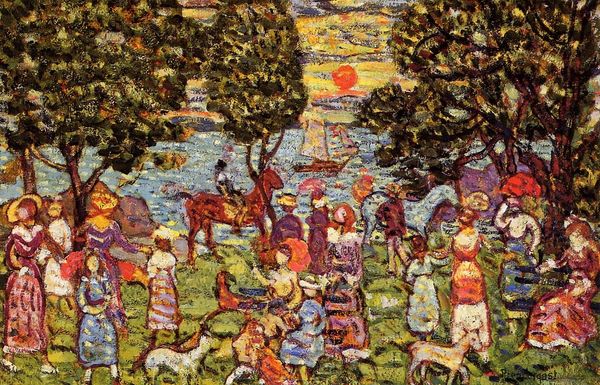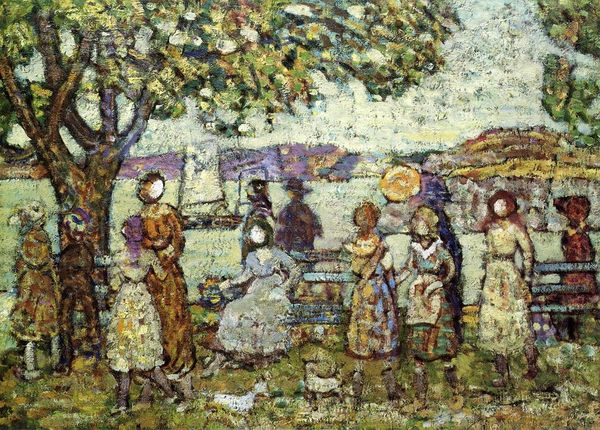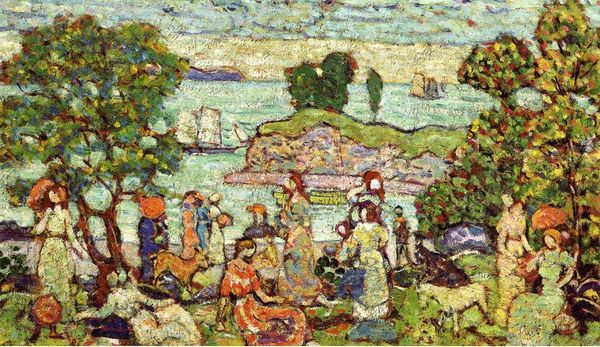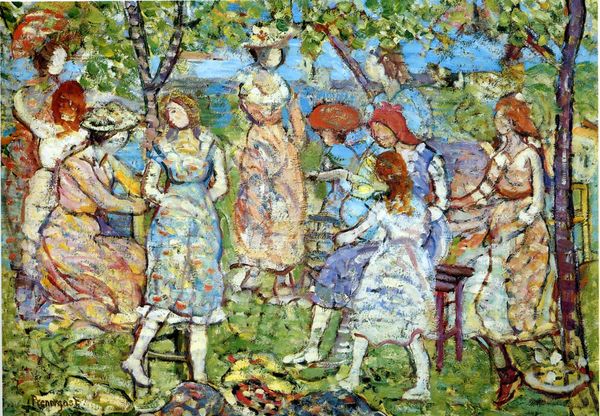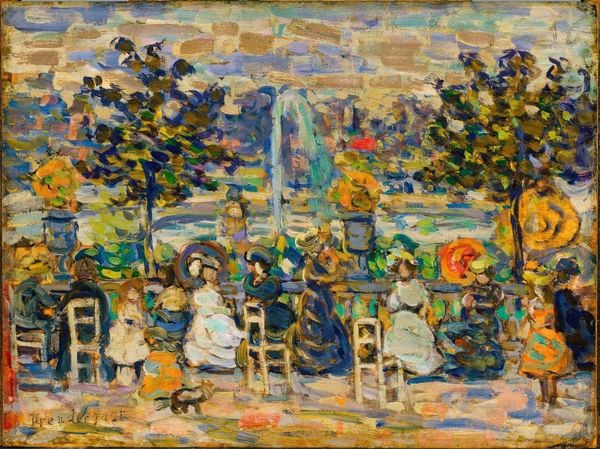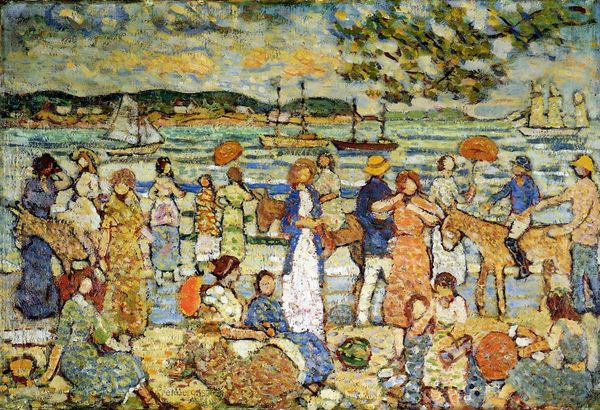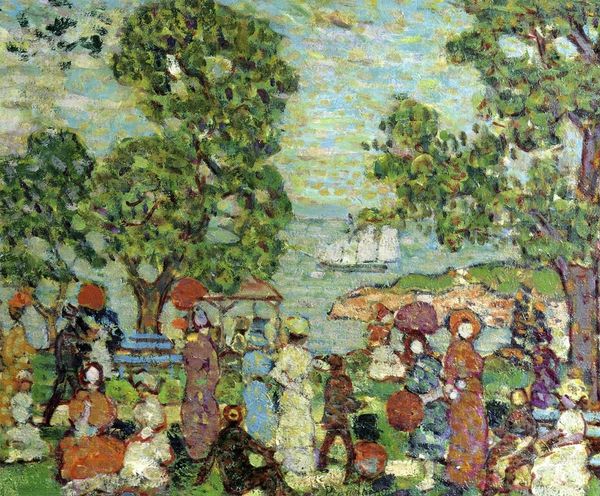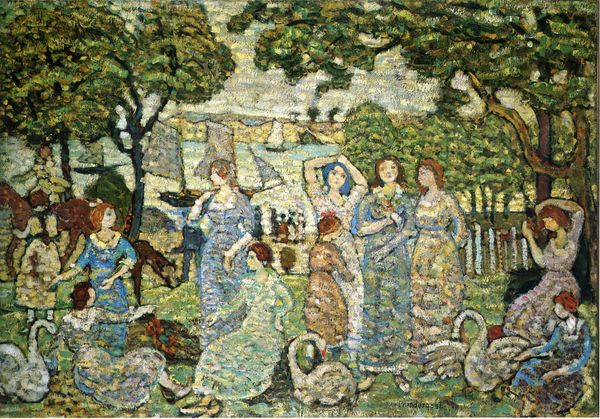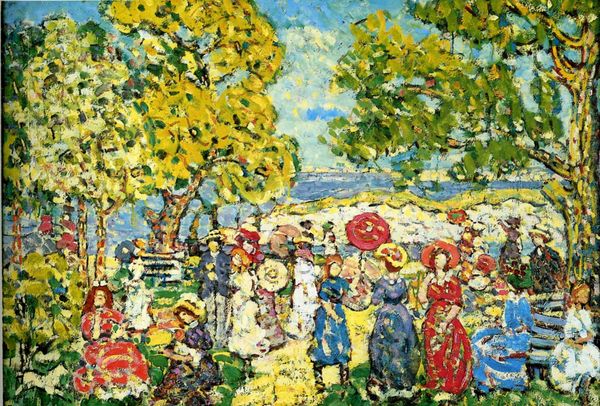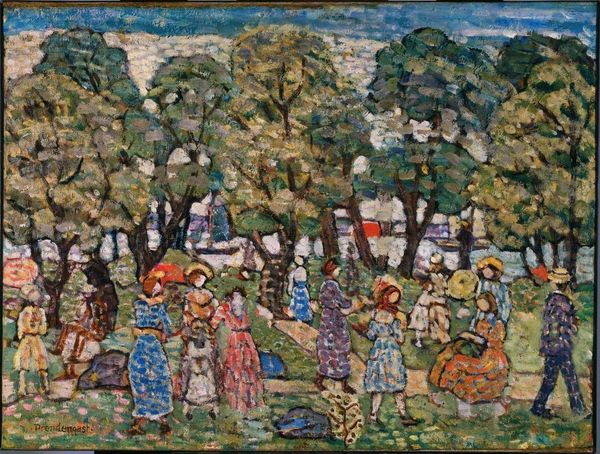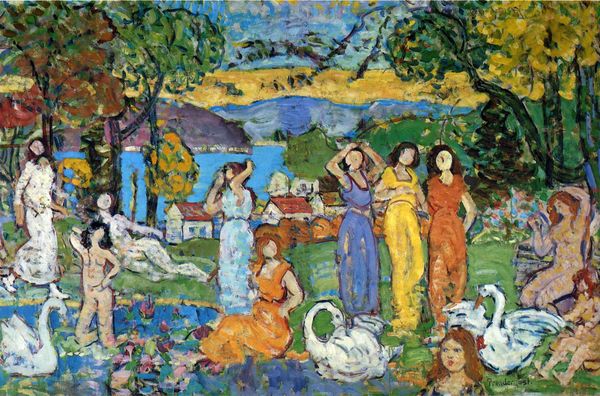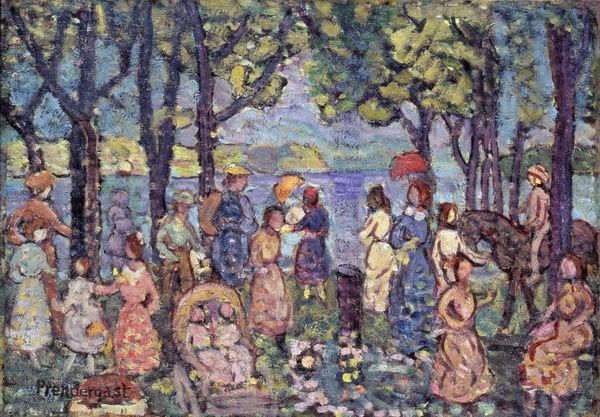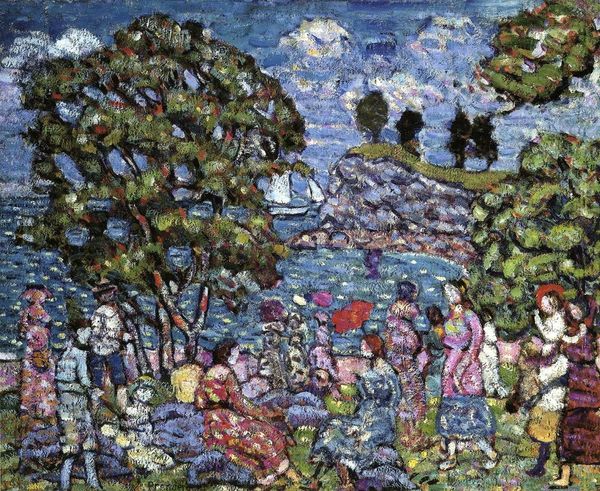
Sunset and Sea Fog 1923
0:00
0:00
mauriceprendergast
Butler Institute of American Art, Youngstown, OH, US
Dimensions: 73.6 x 45.7 cm
Copyright: Public domain
Curator: Maurice Prendergast painted this canvas, "Sunset and Sea Fog," in 1923. It’s now held at the Butler Institute of American Art. What strikes you first about this lively scene? Editor: It’s all surface, isn’t it? Dense textures, almost mosaic-like. The pigment handling is so overt, breaking down the entire image into visible units of labor. The application of paint is so important in this, wouldn’t you agree? Curator: Absolutely, and the scene suggests leisurely pursuits. A fashionable gathering. Notice how Prendergast’s Impressionistic style captures the era's emphasis on outdoor leisure and the burgeoning middle class seeking recreation? The choice of such vibrant oil paint adds a layer to the social narrative. Editor: You see, I can't ignore how each stroke calls attention to the act of its making, as well as drawing me into how Prendergast builds this whole environment with what appears to be just thousands of separate marks and choices. I love this. The colors aren't perfectly blended; instead, they create a shimmer on the surface of the canvas. Curator: It feels distinctly American in its interpretation of European impressionism. He’s focusing on these idyllic scenes that promote certain class ideals… look at the horse rider, at the women parading, posing and looking elegant… he captures these subtle power dynamics present within leisure. Editor: Tell me more. Because as you mention leisure, and the culture and political influences within leisure, I start considering the availability of those materials, that color. How they would have changed across the early 20th Century, the shifts of accessing linseed oil and pigments through trade and manufacturing... all contributing to an accessible palette. Curator: Good point. And to contextualize, Prendergast faced challenges as an American artist breaking into a predominantly European art scene. His style, while Impressionistic, developed a uniquely decorative quality. That is so very clear in his landscapes which provided him space to question some accepted standards. Editor: Yes, a question which begins on that canvas, as the artist interrogates material, medium, paint, and labour. His hand becomes really prominent and unavoidable as a viewer. It also leads me to believe that these outdoor plein-air settings were available to new groups of artists as the industrial era marched on, doesn’t it? Curator: That's a brilliant angle, it forces me to remember that this isn't just about recreation, but the changing landscape of artistic practice in America. Well, this definitely provided me a lot to ponder. Editor: Agreed! Thanks for making me look at how labor intersects in an early-century outdoor painting in the first place.
Comments
No comments
Be the first to comment and join the conversation on the ultimate creative platform.

